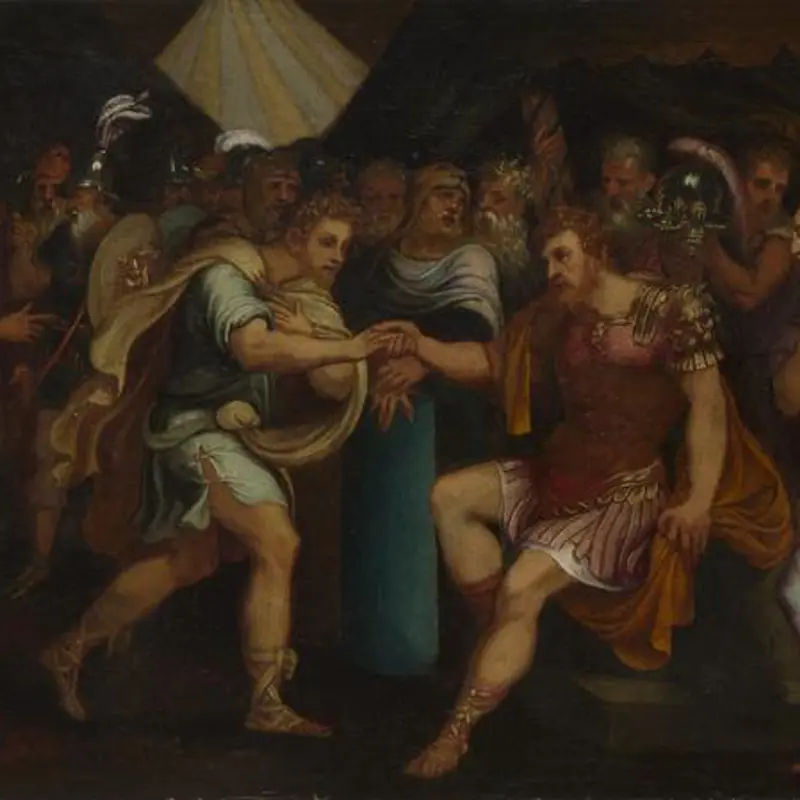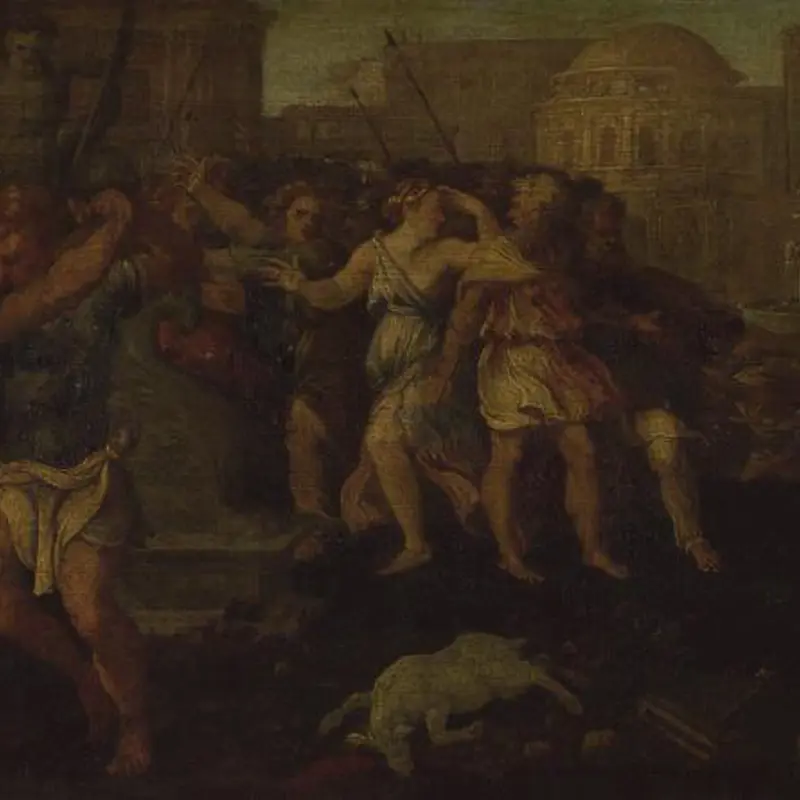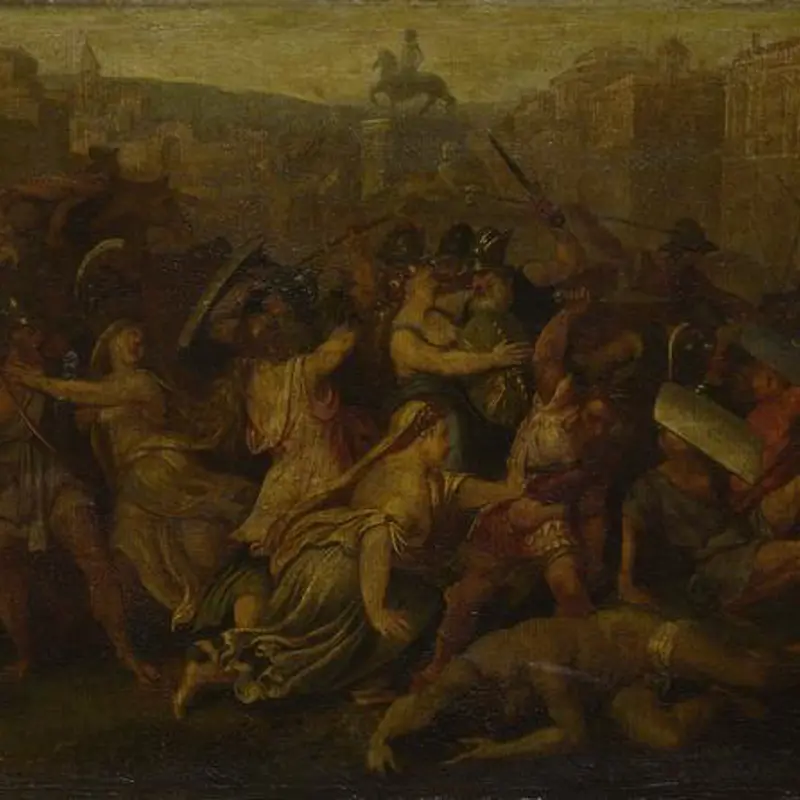Giulio Licinio, 'The Continence of Scipio', after 1566
About the work
Overview
The Continence of Scipio is one of a series of paintings that show scenes from ancient Roman history. They were probably intended to be inserted into wall panelling. Three other pictures in the series are in the National Gallery’s collection: The Attack on Cartagena, The Rape of the Sabines and The Intervention of the Sabine Women.
The painting depicts an event that reveals the Roman general Scipio Africanus’s clemency as a military leader. During Scipio’s campaign against the Carthaginians in Iberia his troops took a beautiful young woman prisoner. Here, the young woman stands behind the seated Scipio in a modest pose based on classical statues of Venus (known in Latin as Venus pudica). Rather than abusing her, Scipio allows the young woman to return to her fiancé, provided that her family become friends of Rome. The ransom raised by her family is being unloaded from camels, but Scipio returns it as a wedding gift, thereby showing both financial and sexual restraint.
Key facts
Details
- Full title
- The Continence of Scipio
- Artist
- Giulio Licinio
- Artist dates
- About 1527; died after 1584
- Part of the series
- Scenes from Ancient Roman History
- Date made
- After 1566
- Medium and support
- Oil, originally on wood, transferred to canvas
- Dimensions
- 35.6 × 153 cm
- Acquisition credit
- Bought, 1860
- Inventory number
- NG643.2
- Location
- Not on display
- Collection
- Main Collection
Provenance
Additional information
Text extracted from the ‘Provenance’ section of the catalogue entry in Cecil Gould, ‘National Gallery Catalogues: The Sixteenth Century Italian Schools’, London 1987; for further information, see the full catalogue entry.
Bibliography
-
1962Gould, Cecil, National Gallery Catalogues: The Sixteenth Century Italian Schools (excluding the Venetian), London 1962
-
1987Gould, Cecil, National Gallery Catalogues: The Sixteenth Century Italian Schools, London 1987
-
2001
C. Baker and T. Henry, The National Gallery: Complete Illustrated Catalogue, London 2001
About this record
If you know more about this work or have spotted an error, please contact us. Please note that exhibition histories are listed from 2009 onwards. Bibliographies may not be complete; more comprehensive information is available in the National Gallery Library.
Images
About the series: Scenes from Ancient Roman History

Overview
These four pictures are from a series of paintings of scenes from ancient Roman history. They were made for the decoration of a room and were originally painted on panel but have since been transferred to canvas. Their size and horizontal format suggests they were probably intended to be inserted into wall panelling, as was common practice in Renaissance Venice.
The pictures in the National Gallery’s collection show: The Attack on Cartagena; The Continence of Scipio; The Rape of the Sabines; and The Intervention of the Sabine Women. Two other pictures from the same series, Coriolanus and Scipio rewarding the Soldiers, are in a private collection.




